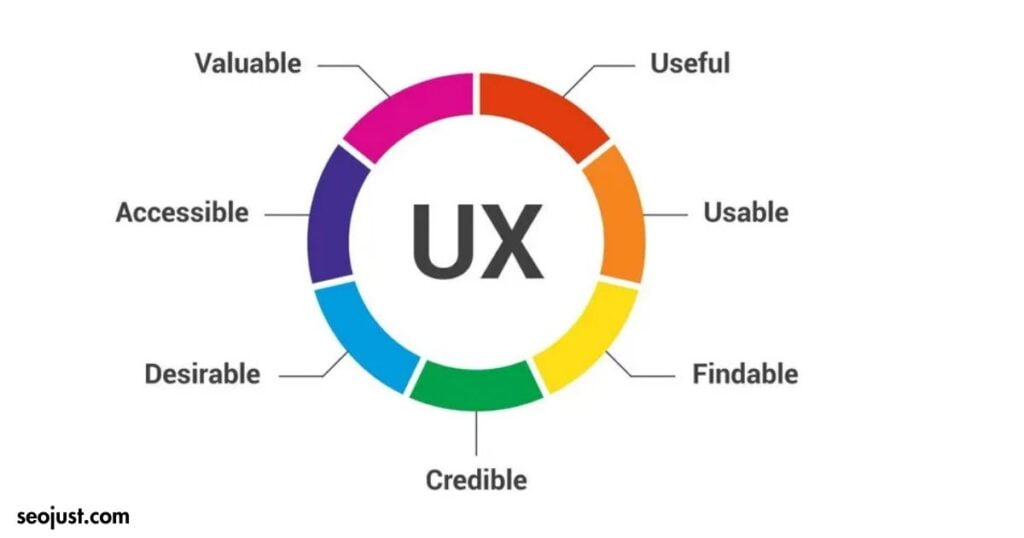Mobile optimization has become top in the ever-developing digital marketing landscape, a trend only to increase in 2024. This Top 10 SEO Mobile Optimization Trends in 2024, where we’ll explore innovative plans and technological developments shaping the future of mobile web presence. With 65% of web traffic currently coming from cell phones, organizations should focus on the perilous job of portable advancement in web search tool rankings.
From the ascent of voice search to the developing significance of computer based intelligence and AI, we’ll direct you through the significant patterns each advanced advertiser should have on their radar. Prepare to unlock the secrets to exploiting visibility, attractive user experience, and driving unmatched meetings in the mobile-first era.
1: Mobile Optimization and First Indexing
In response to the increasing majority of SEO Mobile Optimization internet usage, Google has firmly included mobile-first indexing. This critical shift means that Google uses the mobile version of a website’s content for indexing and ranking. Before, the desktop version was the standard for indexing, often leading to discrepancies in user experience across different platforms.

The suggestions of this change for SEO strategies are profound. Websites without a mobile-optimized version may find themselves plunging in search rankings, making mobile optimization no longer a suggestion but a need. For digital marketers, this highlights the importance of safeguarding that the mobile version of their site is as complete and user friendly as the desktop version.
Also, this shift needs a focus on mobile design principles, such as responsive design, fast loading times, and mobile-friendly navigation, to not only please Google’s algorithms but also cater to modern mobile users’ outlooks.
Also Read: The Ultimate 2024 Guide to Content Distribution Strategy for Maximum Impact
2: The Rise of Voice Search Optimization
Adjusting Web optimization rehearses for voice search questions requires a change in a catchphrase system, basically featuring casual language and long-tail watchwords. The ascent of computerized aides like Siri, Alexa, and Google Colleague has changed how clients cooperate with web search tools; inquiries are currently bound to be expressed as full sentences or questions, reflecting normal discourse designs.
This development demands a more nuanced approach to content creation that prioritizes answering specific questions and directly speaking the user’s intent. Businesses can improve their visibility in voice search results by mixing long-tail keywords that echo users’ conversational tone when speaking to their devices.
This approach aligns with the changing dynamics of search behaviour and contributes to a more engaging and natural user experience.
3: AMP (Accelerated Mobile Pages) Dominance
Leveraging AMP, or Faster Mobile Pages, is a pivotal strategy for improving loading speeds and attractive mobile device user experience. This open-source framework, developed collaboratively by Google and other technology companies, is designed to load web pages on mobile devices faster.
AMP pages can load almost instantaneously by streamlining the HTML code, minimizing CSS (Cascading Style Sheets), and restricting JavaScript usage. This rapid loading is critical in an era where users expect immediate access to information and services. Faster loading times improve user satisfaction and contribute meaningfully to higher engagement and lower bounce rates.
Also, Google has hinted at preferential treatment for AMP-optimized pages in its search results, representing that adopting AMP can bolster a site’s SEO performance. Mixing AMP into a mobile optimization plan is a direct investment in creating a smoother, more efficient, and ultimately more rewarding experience for mobile users.
4: Mobile User Experience (UX)

Crafting mobile-friendly websites goes beyond mere aesthetics; it’s about creating an environment where users can interact flawlessly and professionally. Natural navigation is crucial, easing easy movement around the website without confusion or frustration.
This involves clear, touch-friendly menu buttons, a sensible layout, and a straightforward path to important information or actions users might want. Readable content is another vital aspect, which means using fonts and sizes that are easy to read on smaller screens and ensuring that text blocks aren’t too dense. Optimized images play a vital role, too; they should be high quality but also compressed for quick loading, avoiding any lag that can detract from the user experience.
Together, these elements help reduce bounce rates as visitors are more likely to stay and be involved with the content. Also, a well-designed mobile experience can encourage repeat visits, and attractive overall engagement with the brand or service.
Also Read: Digital Marketing SEO Services: Navigating Success for Your Business
5: Local SEO and Mobile Geotagging
Capitalizing on local SEO strategies and geotagging for mobile users is a potent means of increasing a business’s visibility and attracting customers from the immediate locality. Local SEO involves optimizing a website and its content to rank higher in search results for local queries a key tactic for businesses serving specific geographic areas.
Mixing geotagging involves tagging web content, images, or videos with geographical ID metadata, which further refines this strategy by making it easier for search engines to understand and order the location-specific aspects of the content. This dual approach ensures that when potential customers use mobile devices to search for services or products “near me,” businesses employing these strategies are more likely to appear obviously in search results.
The immediate benefit is a higher likelihood of attracting foot traffic and local online conversions, making local SEO and geotagging indispensable tools in the mobile era’s marketing toolkit.
6: Content Quality

Content quality remains crucial in the landscape of evolving SEO Mobile Optimization trends. Branded by relevance, informativeness, and engagement, high-quality content is the foundation for successful SEO strategies. For mobile users, who classically seek quickly, nearby information, the quality of content not only affects bounce rates and user retention but also meaningfully impacts search engine rankings.
Search engines like Google prioritize content that offers value to the user, joining algorithms capable of assessing the quality and relevance of written material. This means content must be exactly crafted to meet the user’s intent, providing answers, solutions, and insights that are directly beneficial. Furthermore, as mobile screens offer limited real estate, the clarity and shortness of content become paramount.
When done carefully, joining visual elements such as images and videos can improve the mobile user experience, making complex information easily accessible. However, these elements must be optimized for speed and responsiveness to maintain performance.
In essence, content quality for mobile SEO demands a balanced approach. It requires creating valuable, attractive content tailored to mobile usage’s fast-paced, on-the-go nature. Attaining this balance ensures that websites meet the high standards set by search engines and the expectations of mobile users, thereby attractive SEO performance and developing better user engagement.
7: Artificial Intelligence and SEO

Integrating Artificial Intelligence (AI) into mobile web platforms signifies a forward-thinking approach to attractive user engagement and streamlining SEO operations. AI’s ability to analyze vast amounts of data in real time allows for personalizing mobile experiences and modifying content, recommendations, and connections to users’ preferences and behaviours.
This level of personalization makes the mobile experience more engaging for users. It increases the relevance of the content they are presented with, thereby improving the efficiency of SEO strategies. Furthermore, AI can significantly automate and optimize various SEO tasks. From keyword research and optimization to backlink analysis and SEO audits, AI technologies can handle these tasks more efficiently and exactly than outdated methods.
This automation frees up valuable resources and allows SEO professionals to focus on strategy and innovation rather than routine tasks. Mixing AI into mobile platforms and SEO practices is not just a trend; it’s a powerful tool that can elevate the quality of mobile web experiences while improving a site’s visibility and ranking on search engines.
8: Mobile Optimization Images for SEO
Mobile Optimizing images for mobile devices is important to create a fast and responsive website, safeguarding an optimal viewing experience across various screen sizes and resolutions. This process involves several key steps. First, images should be resized to be no larger than the maximum display size needed on the device, preventing needless data usage and speeding up page load times.
Also, choosing the right file format (such as JPEG, PNG, or WebP) based on the image’s content and required quality can meaningfully reduce file sizes without collaborating with visual loyalty. Applying responsive image techniques, such as the `screw` attribute in HTML, allows the browser to select the most suitable image based on the device’s screen size and resolution, further optimizing the loading process. Compressing images through lossless compression methods can also intensely decrease file sizes, safeguarding quicker loading times while keeping image quality.
Balancing these elements resizing, selecting the correct format, and compression is vital in attracting the mobile user’s experience, donating to quicker loading times and supporting responsive design principles that adapt content to the user’s screen.
9: Importance of Secure and Accessible Websites

Ensuring that HTTPS secures websites is critical in building user trust and attracting website rankings. HTTPS (Hypertext Transfer Protocol Secure) encrypts data exchanged between a user’s browser and the website, safeguarding against prying, tampering, and man-in-the-middle attacks. This level of security is for more than just sites handling sensitive transactions. Still, it is now considered a standard for all web presences. Google has confirmed HTTPS as a ranking signal, highlighting its importance in SEO plans. Websites with HTTPS are more likely to rank higher in search results, providing them greater visibility.
In addition to security, making websites accessible to all users, including those with disabilities, is vital for creating an inclusive digital space and can further improve SEO rankings. Web availability involves designing and developing websites with features that allow people with various disabilities to use them effectively. This includes providing alternative text for images, ensuring website navigation is possible through keyboard input, and using sufficient contrast ratios for text.
A commitment to accessibility not only broadens your site’s audience, making it usable to the visually impaired, those with motor impairments, and users with other infirmities, but also aligns with good SEO practices. Search engines favour websites that provide a good user experience, and accessibility developments often lead to better site structure and navigability, enhancing the site’s SEO performance. Implementing HTTPS security and availability measures reflects a commitment to user safety, trust, and inclusivity, which are increasingly important in today’s digital landscape.
10: Mobile Analytics and SEO Measurement
Advanced analytics is essential for understanding mobile user behaviour, monitoring SEO performance, and refining strategies for improved outcomes. Advanced analytics tools provide:
- Deep insights into how users interact with a mobile website.
- Tracking metrics such as page views.
- Bounce rates.
- Conversion rates.
- Time spent on the site.
These tools can also segment user data by device type, location, and behaviour, offering a granular view of mobile user appointments and preferences. By investigating this data, SEO professionals and dealers can identify patterns and trends that inform strategic decisions, optimizing content and structure for better usability and engagement.
Furthermore, advanced analytics enable the monitoring of SEO performance over time. They track keyword rankings, backlink quality, and changes in search engine algorithms, allowing for the agile adaptation of SEO strategies in response to market and technology shifts. This continuous monitoring and analysis facilitate fine-tuning SEO efforts to ensure they align with current best practices and user expectations.
Businesses can make informed choices to enhance their SEO Mobile Optimization web presence by leveraging these insights. This can include optimizing site speed, improving navigation, creating content tailored to mobile users’ search intent, and attracting the overall user experience. Using advanced analytics is a dynamic approach that authorizes businesses to stay ahead in the competitive digital landscape, driving improved SEO outcomes and attaining greater visibility and appointment on mobile platforms.
Conclusion
In conclusion, the “Top 10 SEO Mobile Optimization Trends in 2024″ underscores the rapidly growing digital landscape and the importance of mobile optimization in SEO strategies. From the need for image optimization and the implementation of HTTPS for improved security and trust to the crucial role of web suitability and the insightful utilization of advanced analytics, these trends highlight the multi-faceted approach required to thrive online.
As mobile usage continues to surge, understanding and adapting to these trends will ensure a greater user experience and secure a competitive edge in search engine rankings. Businesses and SEO specialists must stay ahead of these developments, constantly innovating and optimizing to meet and surpass the potential of mobile users in 2024 and beyond. The future of SEO is mobile, and the success of digital strategies hinges on acknowledging and leveraging these key trends.



